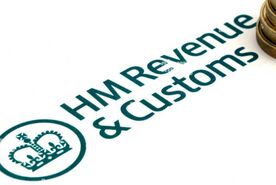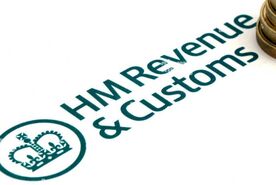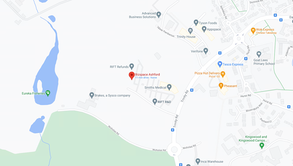|
Please find below the guides available for the following: Payroll Upgrade Checklist Guide Legislative & Software Changes Rates and Bands for NI, PAYE and Stat. Payments Today, 6 March 2024, the Chancellor of the Exchequer, the Rt Hon Jeremy Hunt MP, made his Spring Budget and set out the government’s plans to bring forward a series of reforms to ensure the tax system is simple, fair, keeps pace with economic developments, and supports public finances. One of the tax measures relevant to you as an employer was on National Insurance contributions.
The government has announced a cut to the main rate of Class 1 employee NICs from 10% to 8% from 6 April 2024. Taxes for the self-employed will also be cut by a further 2 pence on top of the 1 pence cut to 8% announced at Autumn Statement. This means that from April 2024 the main rate of Class 4 NICs for the self-employed will now be reduced from 9% to 6%. We ask that you take steps now to start work with your payroll software provider, and where applicable IT delivery partners, to get ready to implement the change to Class 1 employee NICs that comes into effect from 6 April 2024. HMRC’s Basic PAYE Tools product will be updated to reflect this latest change. Another measure the government announced was on the High Income Child Benefit Charge, and an increase to the threshold to £60,000 from 6 April 2024, with a taper up to £80,000. The charge will be 1% of the Child Benefit for every £200 of income that exceeds £60,000 and will equal the payment for income that exceeds £80,000. Your employees may be interested in claiming Child Benefit or restarting Child Benefit payments if they have previously opted out. The charge is tapered, so if they, or their partner, earns between £60,000 and £80,000 it can still be worth their while financially to claim. Claims for Child Benefit can be made in the HMRC app or online and are automatically backdated for 3 months, or the date of birth of the child if later. New guidance on the charge has been published today and you may wish to share this with your employees. Further information on both the NICs and High Income Child Benefit Charge measures can be found on GOV.UK. Information on all of the measures announced can also be found on GOV.UK. For an overview of all the tax legislation and rates announced, read the Overview of tax legislation and rates (OOTLAR). HM Revenue and Customs In 2019 HMRC introduced a permanent easement on reporting PAYE information in real time. We are aware some employers pay their employees earlier than usual over the Christmas period. This can be for a number of reasons, for example, during the Christmas period the business may close, meaning workers need to be paid earlier than normal.
If you do pay early over the Christmas period, please report your normal or contractual payday as the payment date on your Full Payment Submission (FPS) and ensure that the FPS is submitted on or before this date. For example, if you pay on Friday 15 December 2023 but the normal or contractual payment date is Friday 29 December 2023, you will need to report the payment date on the FPS as 29 December 2023 and ensure the submission is sent on or before 29 December 2023. This will help to protect any of your employees who are eligible for Universal Credit. Reporting the payday as the date payment is made may affect current and future entitlements to Universal Credit. The overriding PAYE reporting obligation for employers is unaffected by this exception and remains that you must report payments, on or before the date the employee is paid. Yours faithfully HM Revenue and Customs Dear customer,
Today, the Chancellor of the Exchequer, the Rt Hon Jeremy Hunt MP, made his Autumn Statement speech. The Autumn Statement package sets out a number of tax measures designed to strengthen economic growth through supporting British businesses and increasing the number of people in work. The statement also announces a range of administrative changes which make the tax system simpler and more modern, ensuring businesses can interact with it more easily. Some of the key measures are detailed below, and information on all the measures announced today, including the annual uprating of duties and rates, can be found in the Autumn Statement 2023 and in other documents from the Office for Budget Responsibility. An overview of all the tax legislation and rates announced today is also available. Tax Information and Impact Notes (TIINs) contain more detail on the impact of measures that are being legislated for. National Insurance contributions (NICs) rates The government has announced a cut to the main rate of Class 1 employee NICs from 12% to 10% from 6 January 2024 and a cut to the main rate of Class 4 self-employed NICs from 9% to 8% from 6 April 2024. It has also announced that no one will be required to pay Class 2 self-employed NICs from 6 April 2024. Details of this change are: • from 6 April 2024, self-employed people with profits above £12,570 will no longer be required to pay Class 2 NICs but will continue to receive access to contributory benefits including the State Pension • those with profits between £6,725 and £12,570 will continue to get access to contributory benefits including the State Pension through a National Insurance credit without paying NICs as they do currently • those with profits under £6,725 and others who pay Class 2 NICs voluntarily to get access to contributory benefits including the State Pension, will continue to be able to do so The government will set out next steps on Class 2 reform next year. We will be publishing further guidance on these changes shortly, in the meantime we would ask that you take steps now to start work with your payroll software provider, and where applicable IT delivery partners, to get ready to implement the change to Class 1 employee NICs that comes into effect from 6 April 2024. HMRC's Basic PAYE Tools product will be updated to reflect this change. Extending the National Insurance contributions (NICs) relief for hiring veterans The government has extended the NICs relief for employers who hire former members of the UK regular armed forces until 5 April 2025. This provides a relief to employers on the secondary Class 1 NICs due on the wages of veterans for the first 12 months of their first civilian employment. The relief applies to earnings up to the Veterans Upper Secondary threshold, which is £967 per week. Capital Allowances – permanent full expensing At Spring Budget 2023, the government introduced two new temporary first-year allowances. For qualifying expenditure on the provision of plant or machinery incurred on or after 1 April 2023 but before 1 April 2026, companies can claim a 100% first-year allowance for main rate expenditure – known as full expensing – and a 50% first-year allowance for special rate expenditure Today’s announcement makes full expensing and the 50% first-year allowance permanent by removing the expiry date of March 2026. Tax reliefs A range of measures on tax reliefs have been announced, including enhanced support for Research and Development (R&D) intensive small and medium-sized enterprises, an extension to the 'sunset date' for freeport tax reliefs and administrative changes to the creative industry tax reliefs. Making Tax Digital (MTD) for Income Tax Self Assessment (ITSA) design changes The government will make design changes to MTD for ITSA, simplifying and improving the system for taxpayers and their representatives. The requirement to provide an End of Period Statement will be removed and some taxpayers, including those without a National Insurance number, will be exempted from MTD. Taxpayers who are using MTD will be able to be represented by more than one tax agent. Draft regulations will be published for technical consultation later in 2023. National Minimum and Living Wage Uprating 2024 to 2025 From 1 April 2024, the National Living Wage will increase by 9.8% to £11.44 an hour for eligible workers across the UK aged 21 and over. Young people and apprentices on the National Minimum Wage will also see a boost to their wages, which will increase to £6.40 an hour. Off-Payroll Working (IR35) – calculation of PAYE liability in cases of non-compliance The government will legislate in Finance Bill 2023 to enable organisations to reduce their additional PAYE liability under the off-payroll working rules, to account for Income Tax and Corporation Tax already paid by a worker and their intermediary where a client organisation has been found to be non-compliant with the rules. The changes will take effect from 6 April 2024. A summary of responses to the consultation launched in April 2023 has also been published. Yours faithfully HM Revenue and Customs The annual P11D filing date is now getting closer on the 6th July 2023. The Pegasus P11D software has been released.
You may have read in the latest Employer’s Bulletin that HMRC has announced that from 6th April 2023, it will no longer accept paper P11D and P11D(b) forms. An extract of the article is below: From 6 April 2023 all P11D and P11D(b) must be reported online For the 2022 to 2023 reporting year we will no longer accept paper P11D and P11D(b) forms, this includes lists. We recommend you file using one of the following methods:
From 6 April 2023 we will no longer accept any paper amendments. Instead, we will launch a new online submission link to submit your amended P11D and P11D(b). More information on how to use this will be available in the April edition of the Employer Bulletin. The P11D Organiser and Electronic Submissions A majority of our payroll customers already take advantage of the P11D Organiser’s ability to submit P11D information to HMRC using the in-built tools of the software – the P11D Organiser has a Government Gateway client integrated into the standard software that will securely send P11D and P11D(b) information to HMRC at the click of a button. P11D and P11D(b) Amendments HMRC has now told us that they will “publish and mandate an electronic version of the P11D and P11D(b) form accessible via GOV.UK, which will enable employers to submit amended forms electronically from 06 April 2023. Employers will be able to access a new electronic form within GOV.UK to submit any amended P11D and P11D(b) forms. The electronic form is not linked into the online submission route via either 3rd party or HMRC software, so no changes are required to facilitate its use. Summary HMRC removing the ability to submit paper P11D and P11D(b) forms is a good thing – anytime manual intervention is required to process data there is a chance of errors creeping in, but printed documentation also opens a security hole related to personal information. This change, in line with many of the Making Tax Digital initiatives, will speed up processes, enhance accuracy, and improve security, which are all beneficial to employees and employers. The P11D Organiser is perfectly positioned to ensure that data you have entered is sent to HMRC in the fastest and most secure method available. The P11D Organiser software seamlessly link to your Opera 3, Opera 3 SQL and Opera 3 SQL SE Payroll & HR software. If you want to discuss any of these points with o-a-sys, please drop us an email to [email protected], or give us a call on 01233 812050. Also contact Bruce to discuss pricing and threshold on email to [email protected]. 
The UK Government announced an increase in National Insurance thresholds affecting the 2022 to 2023 tax year during the Spring Statement 2022.
I want to take the opportunity to remind our customers of the threshold changes taking effect from 6 July 2022, meaning employees will pay National Insurance contributions on less of their income. The primary threshold from 6 July 2022 to 5 April 2023 will be £242 per week and £1,048 per month, equivalent to £12,570 per year (increased from £9,880 per year). See the guidance Rates and thresholds for employers 2022 to 2023, ‘Class 1 National Insurance thresholds’ for further information. The National Insurance lower profits limit for self-employed people has also increased in line with the changes for employees. The annual lower profits limit is now set to £11,908 for 2022 to 2023. This is equivalent to 13 weeks of the threshold at £9,880 and 39 weeks at £12,570, mirroring the position for employees. Self-employed people are also no longer required to pay Class 2 National Insurance contributions on profits between the Small Profits threshold (£6,725) and Lower Profits limit (£11,908), but they are still able to build National Insurance credits. Please contact us about these changes – we are here to help! The Statutory Sick Pay Rebate Scheme will close on 17 March 2022. You have until 24 March 2022 to submit any new claims for absence periods up to 17 March 2022, or to amend claims you have already submitted. You will no longer be able to claim back Statutory Sick Pay (SSP) for your employees’ coronavirus-related absences or self-isolation that occur after 17 March 2022. From 25 March, we will return to the normal SSP rules, which means you can revert to paying SSP from the fourth qualifying day your employee is off work regardless of the reason for their sickness absence. For more information on SSP rules, search for 'Statutory Sick Pay (SSP): employer guide' on GOV.UK. For more information on eligibility and how to make your final claims, search 'check if you can claim back Statutory Sick Pay' on GOV.UK.
|
Categories
All
Archives
July 2024
|
||||||
Find uso-a-sys is a trading name for Operational Accounting Systems Limited. Registered in England and Wales Company 05216590
|
Contact us46 The Cobalt Building, 1600 Eureka Park, Lower Pemberton, Ashford, TN25 4BF
01233 812050
[email protected] |
© COPYRIGHT 2021. ALL RIGHTS RESERVED.
|




 RSS Feed
RSS Feed
